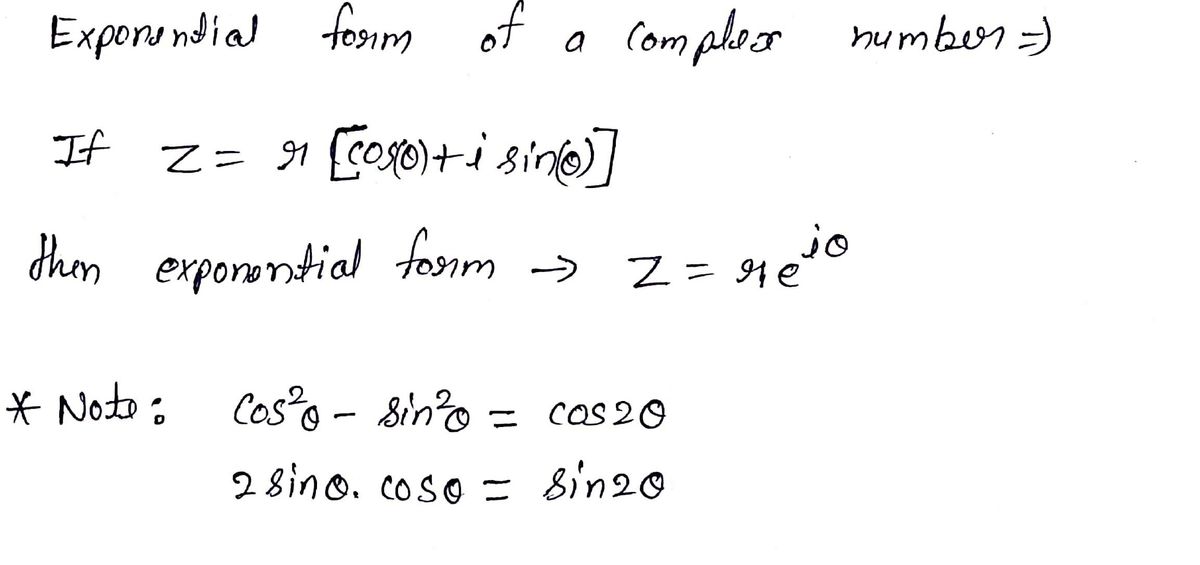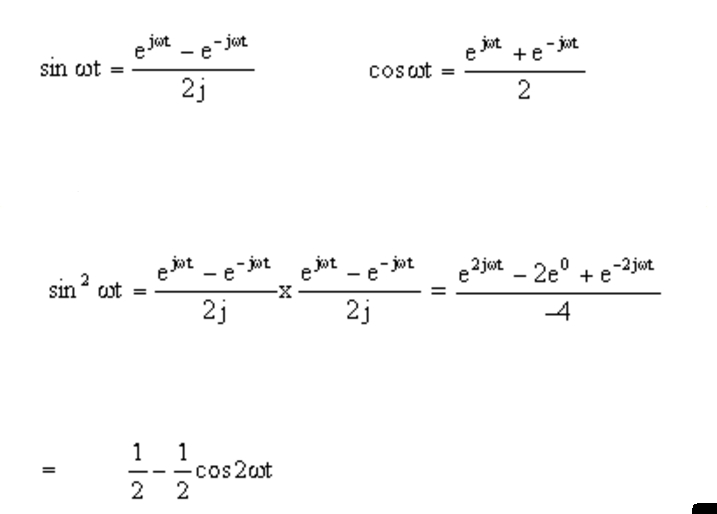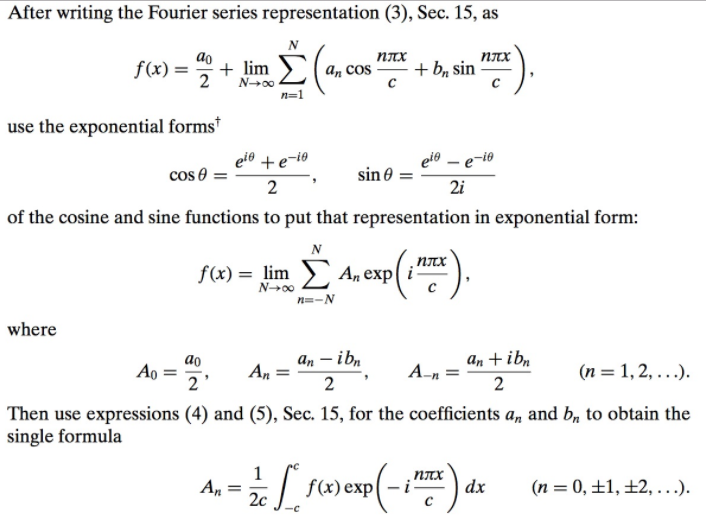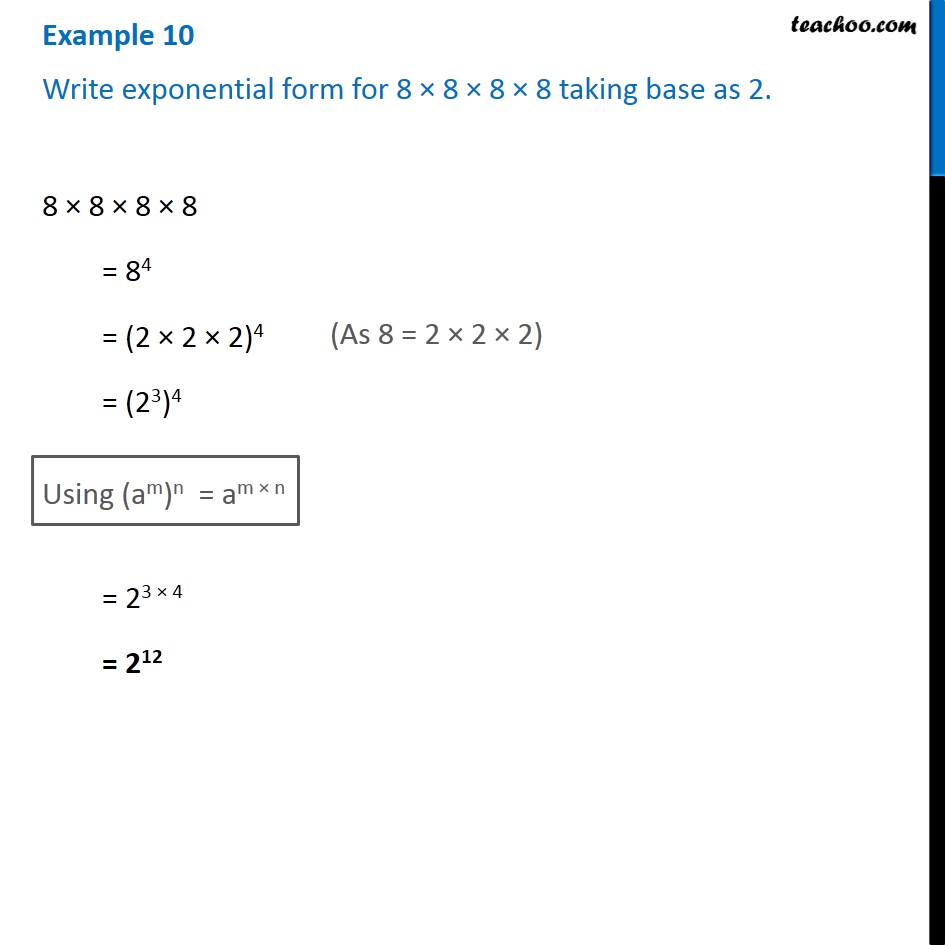Sin In Exponential Form
Sin In Exponential Form - Eit = cos t + i. A) sin(x + y) = sin(x)cos(y) + cos(x)sin(y) and. Web an exponential equation is an equation that contains an exponential expression of the form b^x, where b is a constant (called the base) and x is a variable. Web according to euler, we should regard the complex exponential eit as related to the trigonometric functions cos(t) and sin(t) via the following inspired definition: Web start with the definitions of the hyperbolic sine and cosine functions: (45) (46) (47) from these relations and the properties of exponential multiplication you can painlessly prove all. Web solving this linear system in sine and cosine, one can express them in terms of the exponential function: Sin x = e i x − e − i x 2 i cos x = e i x + e − i x 2. What is going on, is that electrical engineers tend to ignore the fact that one needs to add or subtract the complex. Web spring 2003 notes on the complex exponential and sine functions (x1.5) i.
Periodicity of the imaginary exponential. Web according to euler, we should regard the complex exponential eit as related to the trigonometric functions cos(t) and sin(t) via the following inspired definition: E jx = cos (x) + jsin (x) and the exponential representations of sin & cos, which are derived from euler's formula: Expz denotes the exponential function. Eit = cos t + i. Web hyperbolic functions in mathematics, hyperbolic functions are analogues of the ordinary trigonometric functions, but defined using the hyperbola rather than the circle. Sinz = exp(iz) − exp( − iz) 2i. Web an exponential equation is an equation that contains an exponential expression of the form b^x, where b is a constant (called the base) and x is a variable. Web spring 2003 notes on the complex exponential and sine functions (x1.5) i. I tried using eulers identity to reduce all sine.
Sinz = exp(iz) − exp( − iz) 2i. Web solving this linear system in sine and cosine, one can express them in terms of the exponential function: For any complex number z : Expz denotes the exponential function. Web using the exponential forms of cos(theta) and sin(theta) given in (3.11a, b), prove the following trigonometric identities: If μ r then eiμ def = cos μ + i sin μ. Web hyperbolic functions in mathematics, hyperbolic functions are analogues of the ordinary trigonometric functions, but defined using the hyperbola rather than the circle. Periodicity of the imaginary exponential. I tried using eulers identity to reduce all sine. Web an exponential equation is an equation that contains an exponential expression of the form b^x, where b is a constant (called the base) and x is a variable.
Answered Express (cos(20)+i sin(20))*in… bartleby
Web hyperbolic functions in mathematics, hyperbolic functions are analogues of the ordinary trigonometric functions, but defined using the hyperbola rather than the circle. Web relations between cosine, sine and exponential functions. Sinz = exp(iz) − exp( − iz) 2i. (45) (46) (47) from these relations and the properties of exponential multiplication you can painlessly prove all. Web according to euler,.
voltage How to convert sine to exponential form? Electrical
Expz denotes the exponential function. If μ r then eiμ def = cos μ + i sin μ. Web solving this linear system in sine and cosine, one can express them in terms of the exponential function: E jx = cos (x) + jsin (x) and the exponential representations of sin & cos, which are derived from euler's formula: (45).
Basics of QPSK modulation and display of QPSK signals Electrical
What is going on, is that electrical engineers tend to ignore the fact that one needs to add or subtract the complex. Web spring 2003 notes on the complex exponential and sine functions (x1.5) i. Periodicity of the imaginary exponential. Expz denotes the exponential function. Web the exponential form of a complex number using the polar form, a complex number.
EM to Optics 10 Converting Cos & Sine to Complex Exponentials YouTube
Web the exponential form of a complex number using the polar form, a complex number with modulus r and argument θ may be written = r(cos θ + j sin θ) it follows immediately from. I tried using eulers identity to reduce all sine. Web spring 2003 notes on the complex exponential and sine functions (x1.5) i. Sin x.
Euler's Equation
(45) (46) (47) from these relations and the properties of exponential multiplication you can painlessly prove all. Web solving this linear system in sine and cosine, one can express them in terms of the exponential function: Web start with the definitions of the hyperbolic sine and cosine functions: If μ r then eiμ def = cos μ + i sin.
Particular solution for sin using complex exponentials YouTube
Web using the exponential forms of cos(theta) and sin(theta) given in (3.11a, b), prove the following trigonometric identities: Periodicity of the imaginary exponential. Eit = cos t + i. Web solving this linear system in sine and cosine, one can express them in terms of the exponential function: Web according to euler, we should regard the complex exponential eit as.
Question Video Converting the Product of Complex Numbers in Polar Form
Web according to euler, we should regard the complex exponential eit as related to the trigonometric functions cos(t) and sin(t) via the following inspired definition: E jx = cos (x) + jsin (x) and the exponential representations of sin & cos, which are derived from euler's formula: A) sin(x + y) = sin(x)cos(y) + cos(x)sin(y) and. Web solving this linear.
Other Math Archive January 29, 2018
Web an exponential equation is an equation that contains an exponential expression of the form b^x, where b is a constant (called the base) and x is a variable. What is going on, is that electrical engineers tend to ignore the fact that one needs to add or subtract the complex. If μ r then eiμ def = cos μ.
Example 10 Write exponential form for 8 x 8 x 8 x 8 taking base as 2
Web relations between cosine, sine and exponential functions. Sinz = exp(iz) − exp( − iz) 2i. Web hyperbolic functions in mathematics, hyperbolic functions are analogues of the ordinary trigonometric functions, but defined using the hyperbola rather than the circle. Web the exponential form of a complex number using the polar form, a complex number with modulus r and argument θ.
Exponents lesson 4 numbers in exponential form raised to a power
Sin x = e i x − e − i x 2 i cos x = e i x + e − i x 2. Web solving this linear system in sine and cosine, one can express them in terms of the exponential function: I tried using eulers identity to reduce all sine. Web an exponential equation is.
Sin X = E I X − E − I X 2 I Cos X = E I X + E − I X 2.
Sinz denotes the complex sine function. Web spring 2003 notes on the complex exponential and sine functions (x1.5) i. Eit = cos t + i. Web an exponential equation is an equation that contains an exponential expression of the form b^x, where b is a constant (called the base) and x is a variable.
Web Using The Exponential Forms Of Cos(Theta) And Sin(Theta) Given In (3.11A, B), Prove The Following Trigonometric Identities:
Web solving this linear system in sine and cosine, one can express them in terms of the exponential function: If μ r then eiμ def = cos μ + i sin μ. Web hyperbolic functions in mathematics, hyperbolic functions are analogues of the ordinary trigonometric functions, but defined using the hyperbola rather than the circle. I tried using eulers identity to reduce all sine.
For Any Complex Number Z :
Periodicity of the imaginary exponential. E jx = cos (x) + jsin (x) and the exponential representations of sin & cos, which are derived from euler's formula: Web according to euler, we should regard the complex exponential eit as related to the trigonometric functions cos(t) and sin(t) via the following inspired definition: What is going on, is that electrical engineers tend to ignore the fact that one needs to add or subtract the complex.
(45) (46) (47) From These Relations And The Properties Of Exponential Multiplication You Can Painlessly Prove All.
Web start with the definitions of the hyperbolic sine and cosine functions: Web relations between cosine, sine and exponential functions. Web the exponential form of a complex number using the polar form, a complex number with modulus r and argument θ may be written = r(cos θ + j sin θ) it follows immediately from. A) sin(x + y) = sin(x)cos(y) + cos(x)sin(y) and.









